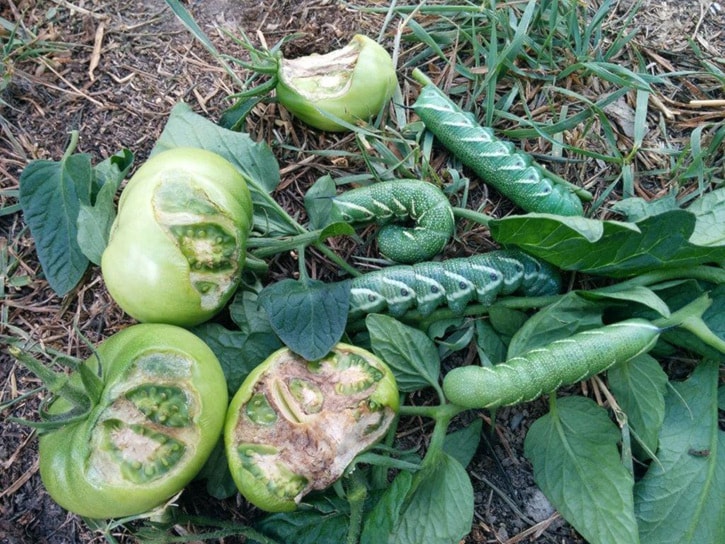The other day, as I was tying a stem on one of my tomato plants, I found the perfect subject for this column: Tomato hornworms. As I was bending down to grab the stem, I noticed a green tomato with a big chunk missing. I recognized the damage instantly and started looking for the culprit.
My niece is visiting and helping a lot in the garden. I called her and she helped me look and of the four hornworms, she found three. They are very hard to find as they blend so well on the stems or along the leaves.
The following is taken from www.almanac.com/pest/tomato-hornworms.
Tomato hornworms are green caterpillar pests. They can ruin your tomato crop in record time; they also feed on eggplant, pepper and potato. They can blend in quite easily with the green foliage and feed non-stop, creating spotty and chewed leaves and fruits.
Cycle: In late spring, large adult moths lay eggs on the undersides of foliage, which will hatch within a week. Caterpillar larvae will feed from four to six weeks before creating a cocoon for overwintering in the soil. If the weather is warm enough, larvae may only burrow for as little as two to three weeks. Moths will emerge in the spring, and can be identified by their orange markings. They will then lay eggs once again. More than one generation a year may be possible in warmer climates.
They can be up to five inches long (13 cm). They do the most damage in the caterpillar or larvae, stage. They are pale green with white and black markings, plus a horn-like protrusion. The caterpillar also has eight V-shaped stripes on its green body. Tomato hornworms come from a mottled brown moth. The larvae blend really well with the plant greenery. Just get used to a daily patrol, looking for hornworm eggs and small caterpillars.
Look closely at the top of your tomato leaves for dark green droppings left by the larvae feeding on the leaves. Then look at the underside of leaves and you’ll find a hornworm. Look for stems missing some leaves and wilted leaves hanging down. You may find white cocoons and their hornworm hosts nearby. If you see leaves with large holes and severe defoliation, devoured flowers, and/or scarring on fruit surfaces, you have tomato hornworms. The fruit also might be damaged by sunscald because of the reduced foliage. Handpicking is an excellent tactic for control if you have the time and patience, or a small garden. The caterpillars are not dangerous and cannot sting. If you are squeamish about crushing these large insects, drop them into soapy water instead. If the hornworm population or the area of your garden is too large, insecticides can be a useful control. You can use the botanical Bt (Bacillus Thuringiensis), which is a bacterium that acts as a stomach poison (but doesn’t harm other plants or animals).
Till soil at the beginning and end of each gardening season to destroy overwintering larvae. Keep wasps around; they’re beneficial insects which feed on hornworms and act as a biological control. You may see hornworms with wasp larvae attached, which look like grains of rice. These attacked hornworms will have little effect on your plants, so leave them and let the wasps carry out their lifecycle. To keep hornworms away from your tomato plants next year, try interplanting dill or basil; marigolds are also an excellent companion plant and keep many pests away.
For more information: 250-558-4556 or plantlady1@shaw.ca
Jocelyne Sewell is an organic gardening enthusiast in the North Okanagan and member of Okanagan Gardens & Roses Club. Her column appears every other Wednesday.
